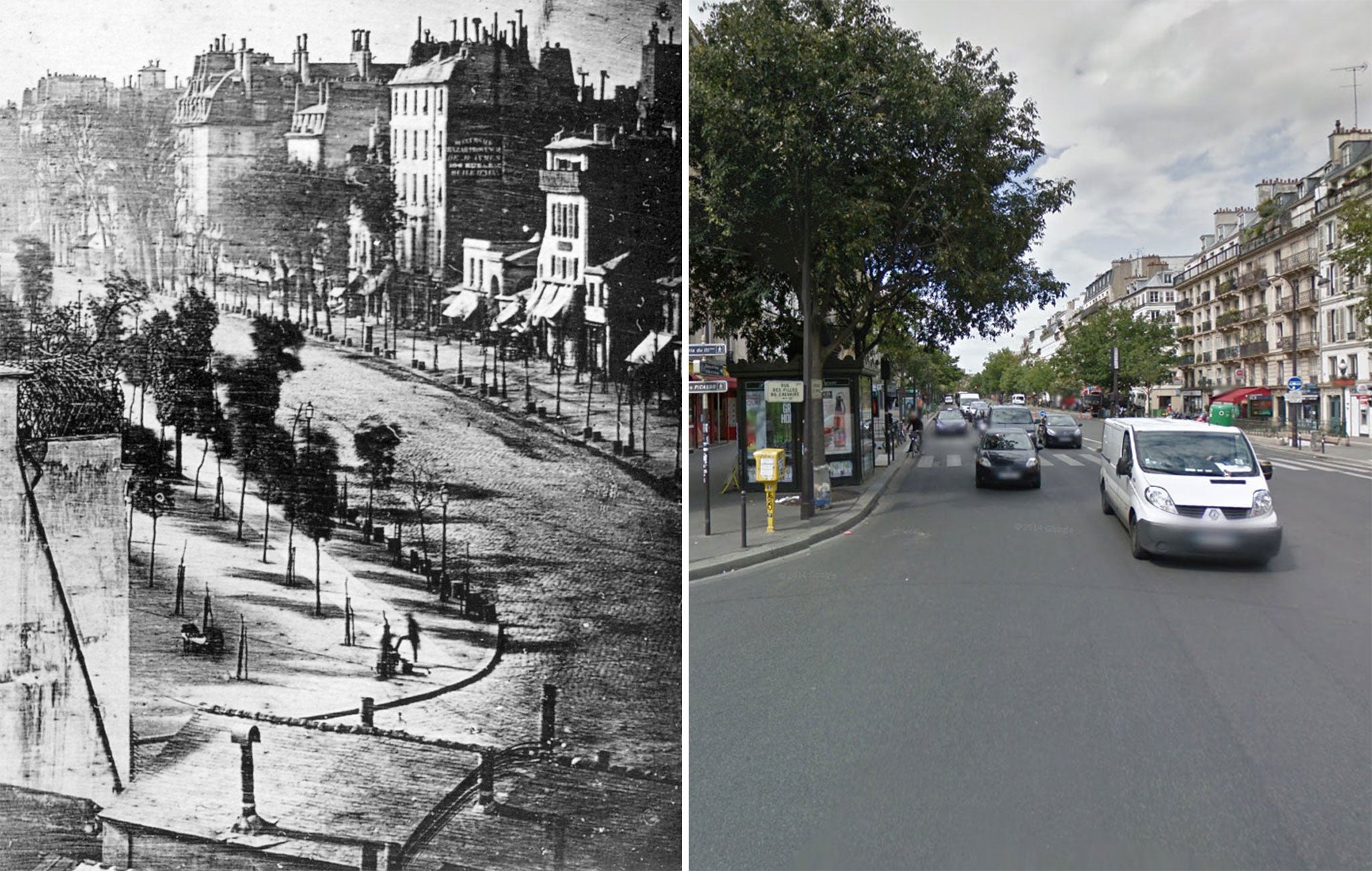This is the first ever photograph of a human – and how the scene it was taken in looks today
Unknown man who stopped to have his shoes shined would have had no idea he was making history

A lot has changed in Paris since the first photograph showing a human being was taken on its streets more than 175 years ago – but if you took one today using the same technique, you probably wouldn’t be able to make out anybody at all.
Louis Daguerre’s view of the Boulevard du Temple in the French capital was captured in 1838, using a method – the daguerreotype – that took around seven minutes to develop a single image.
Such a long exposure meant that anything moving around was not picked up. The only figure to stay still long enough was a man, on the corner of the street, who had stopped to have his shoes shined.
The picture came to fresh attention a few years ago when a University of Rochester report suggested – wrongly – that new analysis of 1840s photographs in Cincinnati showed the first humans.
Daguerre’s image was shown to refute this. Created using a chemically-treated silver plate, it only shows anyone at all because the man stopped long enough to make history. Taking a daguerreotype in the same place today, it is unlikely anyone would be standing around having their shoes shined.
The first photograph of any kind was made by Joseph Nicephore Niepcea in 1826 using a silver and chalk mixture that created too blurry an image.
Daguerre’s technique was the first to produce a sharp image in a way that could be widely replicated, and his was the first photographic method to be adopted around the world. As with most daguerreotypes, that of Boulevard du Temple is a mirror image. It has been flipped at the top of the page to make a more direct comparison with today.
This article was amended on 18 January 20234. It previously inaccurately stated that the image was captured in 1938, instead of 1848.
Subscribe to Independent Premium to bookmark this article
Want to bookmark your favourite articles and stories to read or reference later? Start your Independent Premium subscription today.

Join our commenting forum
Join thought-provoking conversations, follow other Independent readers and see their replies